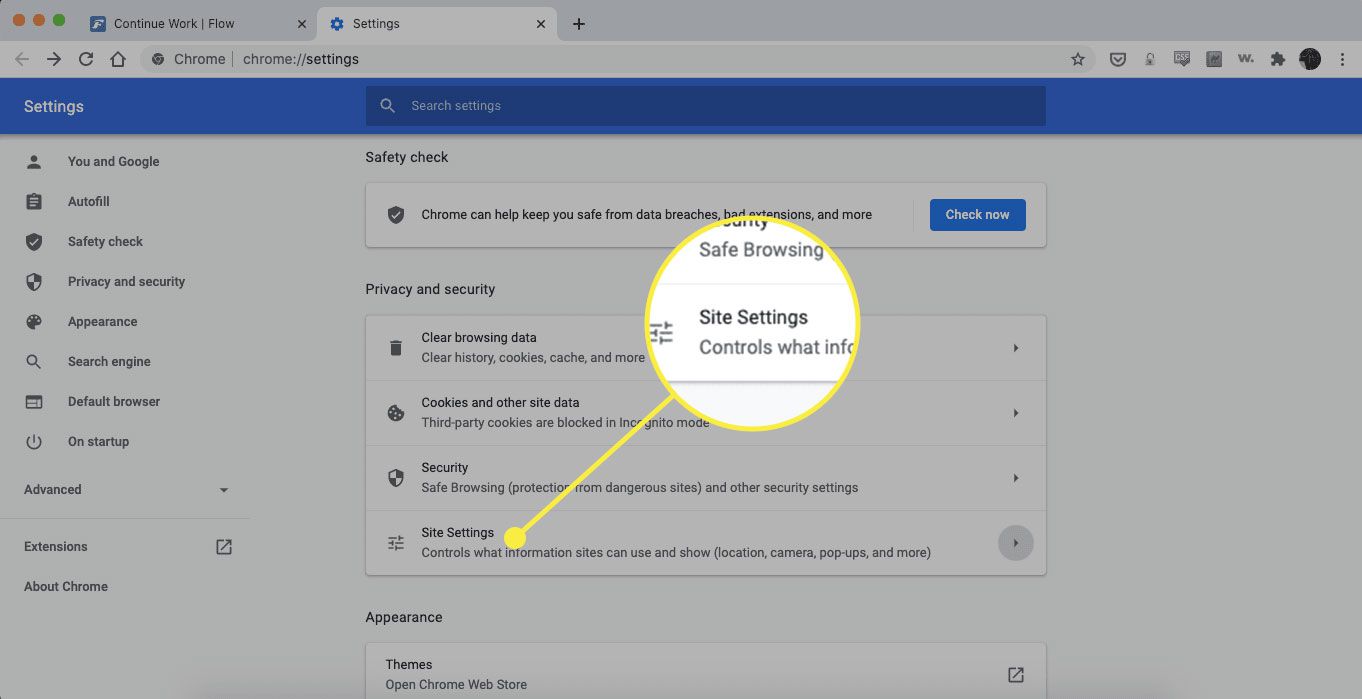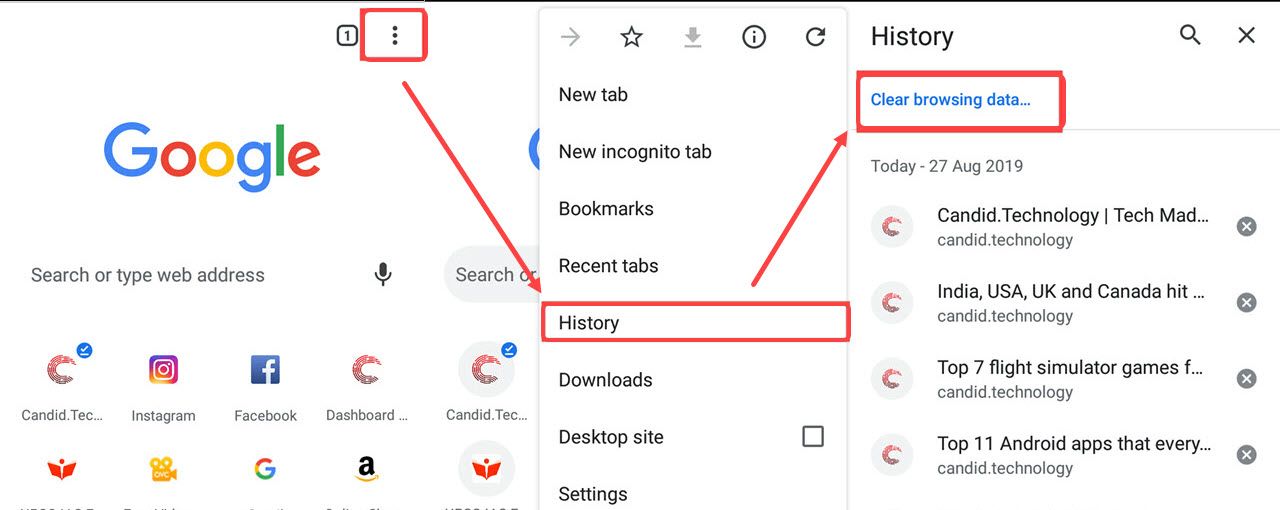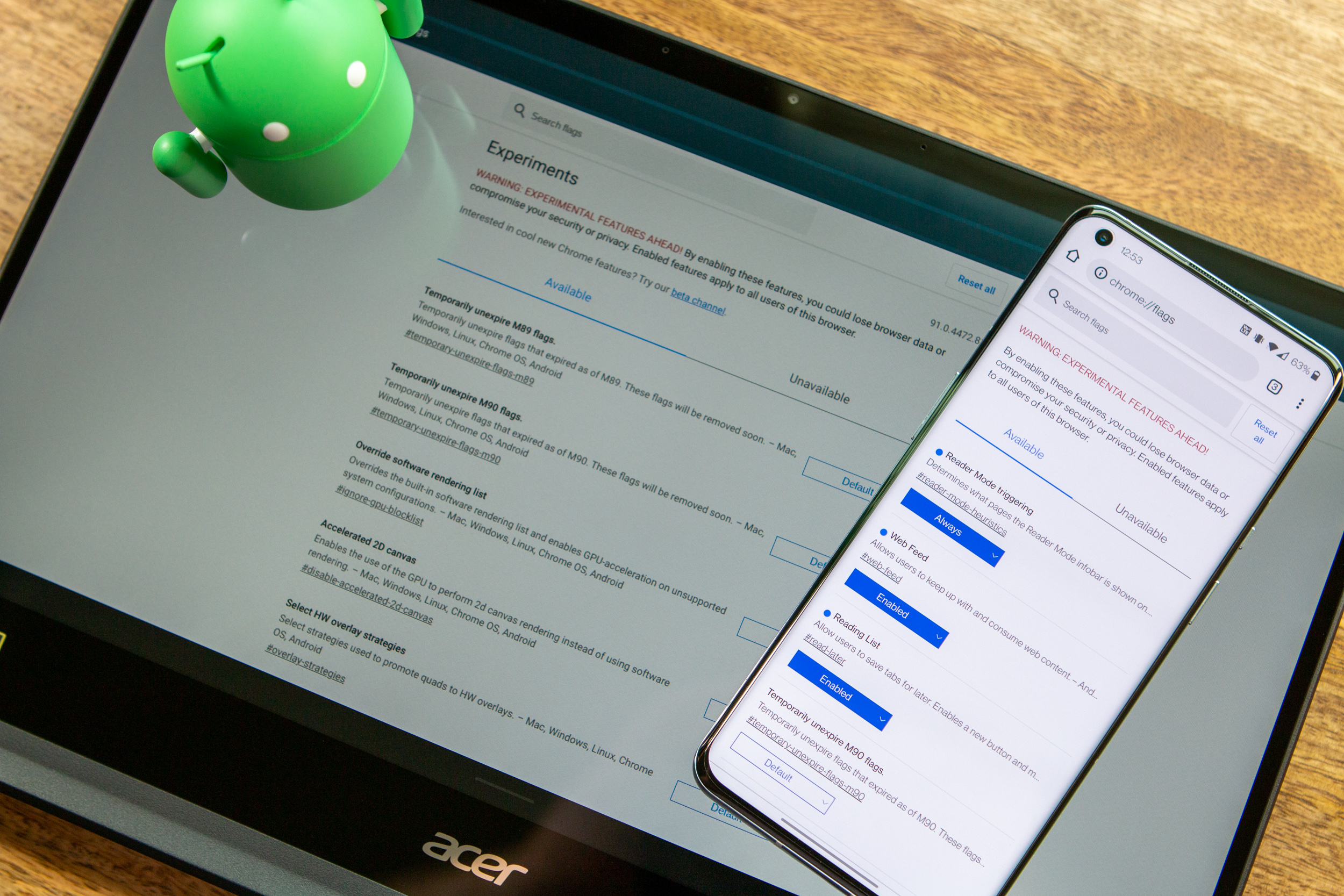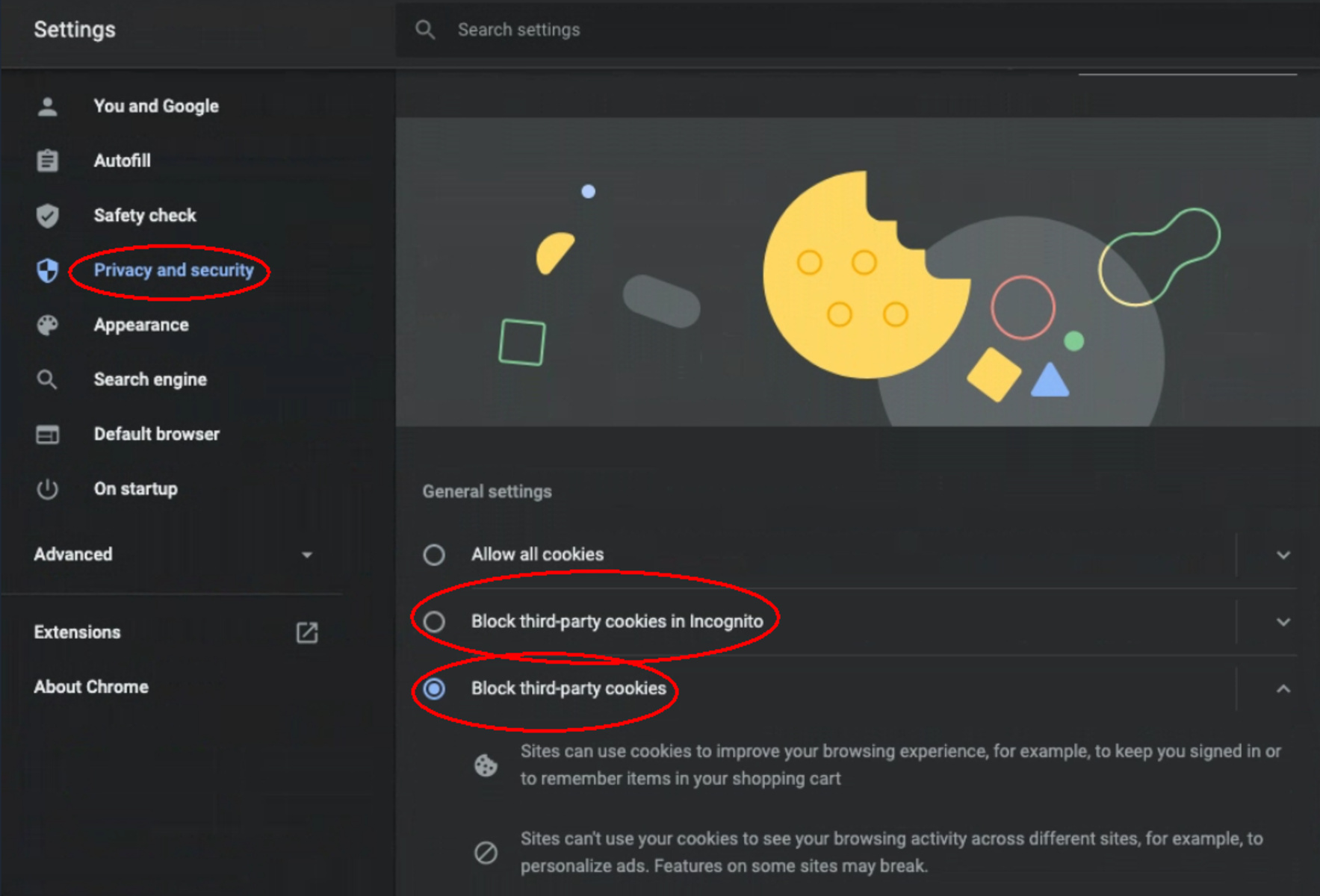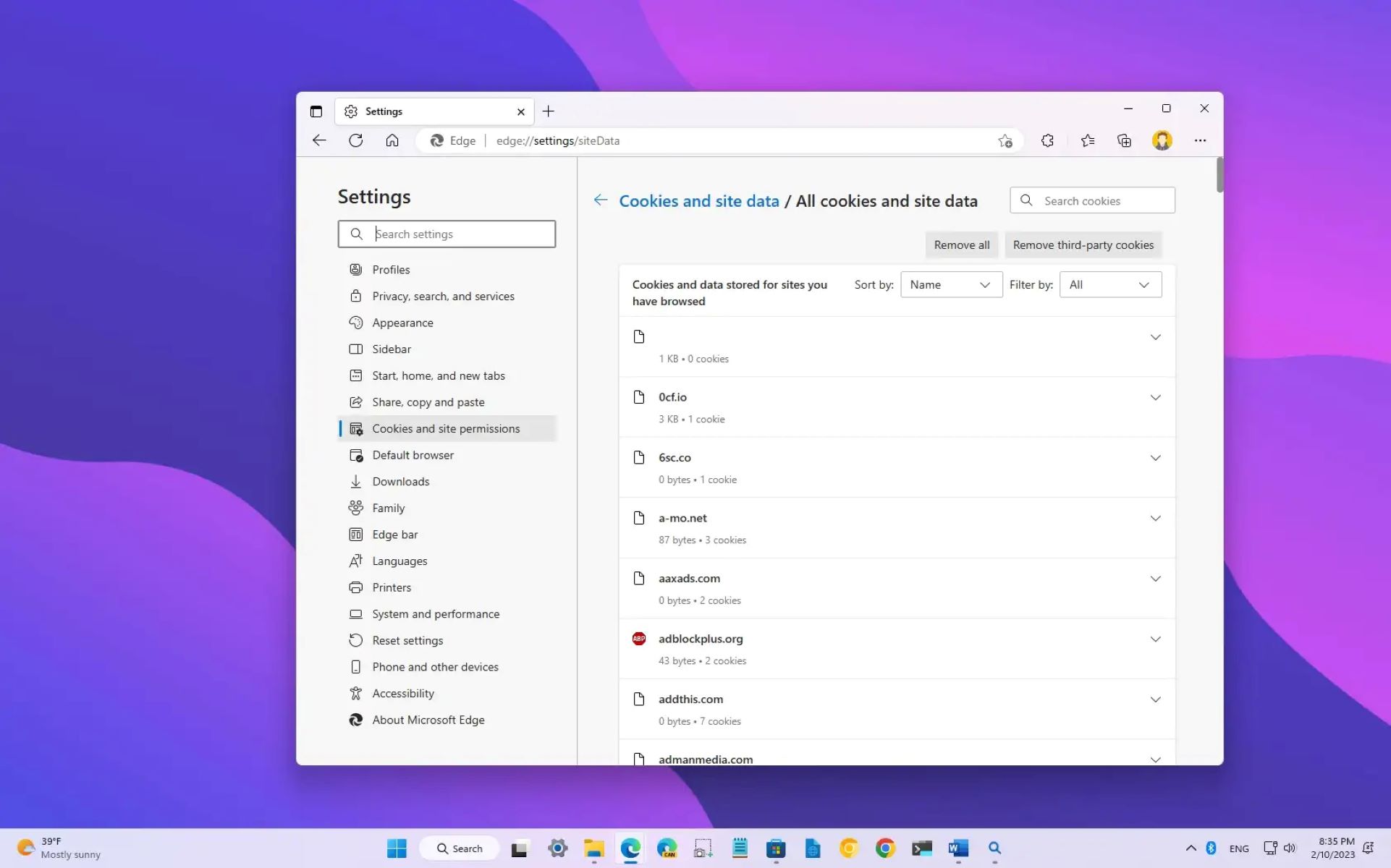Introduction
Welcome to the world of web browsing, where cookies play a significant role in enhancing your online experience. Cookies are small pieces of data stored on your computer by websites you visit. They serve various purposes, such as remembering your login information, personalizing your browsing experience, and tracking your activities for targeted advertising. While cookies can be beneficial, they can also accumulate over time, potentially compromising your privacy and slowing down your browser.
In this guide, we will explore how to delete cookies in the popular Chrome browser. Whether you want to enhance your privacy, troubleshoot website issues, or simply declutter your browsing data, knowing how to manage cookies effectively is essential. By following the steps outlined in this article, you will gain a better understanding of how to maintain control over your online privacy and optimize your browsing experience.
Now, let's dive into the step-by-step process of deleting cookies in Chrome, empowering you to take charge of your digital footprint and ensure a smoother, more secure browsing experience.
Step 1: Open Chrome Browser
To begin the process of deleting cookies in Chrome, the first step is to open the Chrome browser on your computer or mobile device. Chrome is a widely used web browser known for its user-friendly interface, robust features, and seamless integration with various devices and platforms.
If you are using a Windows computer, you can launch Chrome by clicking on the Chrome icon located on your desktop or by searching for "Chrome" in the Windows Start menu. On a Mac, you can open Chrome by clicking on the Chrome icon in the Applications folder or by searching for it using Spotlight.
For mobile users, simply tap on the Chrome app icon on your home screen or in the app drawer to open the browser.
Once Chrome is launched, you will be greeted by the familiar interface, featuring the omnibox (address bar), tabs, and various navigation controls. Take a moment to familiarize yourself with the browser's layout, as you will be using these elements to navigate through the settings and perform the necessary actions to delete cookies.
With Chrome now open and ready for action, you are one step closer to managing your browsing data and optimizing your online privacy. The next step will guide you through accessing the Chrome settings, where you can fine-tune your browsing preferences and take control of your cookies and other site data.
Now that Chrome is at your fingertips, let's move on to the next step and delve into the process of accessing the browser's settings to manage your cookies effectively.
Step 2: Access Chrome Settings
Accessing the Chrome settings is the gateway to customizing your browsing experience and managing various aspects of your browser, including cookies and site data. Chrome offers a user-friendly interface that makes it easy to navigate through settings and preferences, empowering users to tailor their browsing environment to their specific needs.
To access the Chrome settings, look for the three-dot menu icon located in the top-right corner of the browser window. This icon, often referred to as the "More" icon, represents the main menu for accessing Chrome's features and settings. Clicking on this icon will reveal a dropdown menu with a range of options for customizing your browsing experience.
Upon clicking the three-dot menu icon, you will see a list of options, including "New tab," "New window," "Bookmarks," "History," "Downloads," "Zoom," "More tools," "Cast," "Settings," "Help," and "Exit." To access the settings, simply click on the "Settings" option, which is represented by a gear icon. This action will redirect you to the Chrome settings page, where you can explore and modify various browser preferences.
Alternatively, you can access the Chrome settings directly by typing "chrome://settings/" into the omnibox (address bar) and pressing Enter. This URL serves as a shortcut to the settings page, bypassing the need to navigate through the dropdown menu.
Once you have accessed the Chrome settings, you will be presented with a comprehensive range of options organized into different categories, such as "Privacy and security," "Autofill," "Site settings," "Advanced," and more. These categories allow you to delve into specific aspects of your browsing experience and make adjustments according to your preferences.
In the "Privacy and security" section, you will find the "Clear browsing data" option, which is crucial for managing cookies and other site data. This option enables you to initiate the process of clearing your browsing history, cookies, cached images and files, and other site data, providing you with control over your digital footprint.
By accessing the Chrome settings, you are empowered to navigate through a wealth of options and preferences, allowing you to fine-tune your browsing environment to align with your privacy and security preferences. With the settings at your disposal, you are now ready to proceed to the next step and initiate the process of clearing your browsing data, including cookies and other site data.
With the Chrome settings within reach, you are equipped with the tools to take charge of your browsing experience and ensure that your privacy and security preferences are upheld. Let's move on to the next step and delve into the process of clearing browsing data to manage cookies effectively.
Step 3: Clear Browsing Data
Clearing browsing data in Chrome is a fundamental aspect of maintaining a streamlined and secure browsing experience. By removing accumulated cookies, cached images and files, browsing history, and other site data, you can optimize your browser's performance and enhance your privacy. The process of clearing browsing data in Chrome is straightforward and empowers users to take control of their digital footprint.
To initiate the clearing of browsing data, navigate to the Chrome settings by clicking on the three-dot menu icon in the top-right corner of the browser window and selecting "Settings." Alternatively, you can directly access the settings by typing "chrome://settings/" into the omnibox and pressing Enter.
Once in the settings, locate the "Privacy and security" section and click on "Clear browsing data." This action will redirect you to the browsing data management page, where you can specify the types of data you want to clear.
You will be presented with a range of options, including "Browsing history," "Cookies and other site data," "Cached images and files," and more. To focus specifically on clearing cookies, ensure that the "Cookies and other site data" option is selected. You can also choose the time range for which you want to clear the data, such as the past hour, day, week, month, or all time.
After selecting the desired options, click on the "Clear data" button to initiate the process. Chrome will then proceed to clear the selected browsing data, including cookies and other site data, based on your specified preferences.
It's important to note that clearing cookies will sign you out of websites and remove site-specific preferences, such as login information and personalized settings. However, this action can also resolve issues related to website functionality and privacy concerns, making it a valuable tool for maintaining a secure and efficient browsing experience.
By regularly clearing browsing data, including cookies, you can ensure that your browser operates smoothly, safeguard your privacy, and mitigate potential security risks associated with accumulated site data. This proactive approach to managing your browsing data empowers you to maintain a clean digital footprint and enjoy a more streamlined and secure online experience.
With the browsing data cleared, you have taken a proactive step towards optimizing your browsing environment and upholding your privacy and security preferences. Now, let's proceed to the next step and delve into the process of managing cookies effectively.
Step 4: Select Cookies and Other Site Data
After accessing the "Clear browsing data" option in the Chrome settings, you will be presented with a range of data types that can be cleared, including browsing history, cookies and other site data, cached images and files, and more. In this step, we will focus on the specific process of selecting "Cookies and other site data" to manage these elements effectively.
When you click on the "Clear browsing data" option in the Chrome settings, a new window will appear, providing you with a list of data types that can be cleared. Among these options, you will find "Cookies and other site data," which is essential for managing the stored cookies and site-specific data accumulated during your browsing sessions.
To select "Cookies and other site data," simply ensure that the corresponding checkbox is ticked. This action indicates that you want to include cookies and site data in the data clearing process. By selecting this option, you are taking a proactive step towards managing your browsing data and optimizing your privacy and security preferences.
In addition to selecting "Cookies and other site data," you can also specify the time range for which you want to clear the data. Chrome offers the flexibility to choose the clearing duration, allowing you to remove data from the past hour, day, week, month, or all time. This level of customization empowers you to tailor the data clearing process according to your specific needs and browsing habits.
By selecting "Cookies and other site data" and choosing the appropriate time range, you are effectively controlling the scope of the data clearing process. This level of control ensures that you can manage your cookies and site data with precision, addressing privacy concerns and optimizing your browsing experience.
Once you have selected "Cookies and other site data" and specified the clearing duration, you are ready to proceed to the final step of clearing the data. This action will initiate the process of removing accumulated cookies and site-specific data, providing you with a clean slate for your browsing activities.
With the cookies and site data selected for clearing, you have taken a proactive step towards managing your browsing data and upholding your privacy and security preferences. This level of control empowers you to maintain a streamlined and secure browsing experience, ensuring that your digital footprint remains clean and optimized.
Now that you have selected "Cookies and other site data," let's move on to the final step and delve into the process of clearing the data to complete the cookie management process effectively.
Step 5: Clear Data
After selecting the types of data you want to clear, including "Cookies and other site data," it's time to initiate the process of clearing the selected data. This final step ensures that accumulated cookies and site-specific data are removed from your browsing environment, providing you with a fresh start and optimizing your privacy and security preferences.
To clear the selected data, simply click on the "Clear data" button within the browsing data management window. This action serves as the trigger for Chrome to commence the data clearing process, including the removal of cookies and other site data based on your specified preferences.
Upon clicking the "Clear data" button, Chrome will begin processing the request, systematically removing the selected data types from your browsing history. The duration of this process may vary depending on the volume of data being cleared and the performance of your device. However, Chrome's efficient data clearing mechanism ensures that the process is completed in a timely manner, allowing you to resume your browsing activities with a refreshed environment.
It's important to note that clearing cookies and other site data will sign you out of websites and remove site-specific preferences, such as login information and personalized settings. While this may require you to log back into your favorite websites and reconfigure certain preferences, it also serves as a proactive measure to maintain a clean digital footprint and address privacy concerns.
By regularly clearing browsing data, including cookies and other site data, you are taking a proactive approach to managing your digital footprint and optimizing your browsing experience. This practice not only enhances your privacy and security but also contributes to the efficient operation of your browser, ensuring that it remains responsive and streamlined.
With the selected data cleared, you have successfully completed the process of managing cookies and other site data in Chrome. By taking control of your browsing data and privacy preferences, you are empowered to maintain a secure and efficient online experience, free from the clutter of accumulated site data.
Now that you have cleared the selected data, you can proceed with confidence, knowing that your browsing environment is optimized and your privacy preferences are upheld. With a clean digital slate, you are ready to navigate the web with enhanced control and peace of mind.
Conclusion
In conclusion, mastering the art of managing cookies in the Chrome browser empowers you to take control of your digital footprint, enhance your privacy, and optimize your browsing experience. By following the step-by-step process outlined in this guide, you have gained valuable insights into the proactive management of cookies and other site data, ensuring that your online activities are conducted in a secure and streamlined environment.
Deleting cookies in Chrome is not merely a routine maintenance task; it is a proactive measure to safeguard your privacy and maintain the efficiency of your browsing experience. By regularly clearing accumulated cookies and site-specific data, you mitigate potential privacy risks and ensure that your browser operates smoothly, free from the clutter of unnecessary data.
Furthermore, the process of clearing cookies in Chrome serves as a reset button for your browsing activities, allowing you to start afresh with a clean digital slate. While clearing cookies may sign you out of websites and remove site-specific preferences, it also provides a valuable opportunity to address privacy concerns and troubleshoot potential issues related to website functionality.
As you navigate the web, it's essential to maintain a balance between personalization and privacy. While cookies contribute to a personalized browsing experience by remembering your preferences and login information, they can also accumulate over time, potentially compromising your privacy. By understanding how to manage cookies effectively, you can strike this balance, ensuring that your browsing experience remains tailored to your needs while upholding your privacy and security preferences.
In the ever-evolving landscape of online privacy and security, the ability to manage cookies effectively is a valuable skill that empowers you to navigate the web with confidence. By staying informed about best practices for managing cookies and other site data, you can ensure that your digital footprint remains clean and optimized, contributing to a secure and efficient browsing experience.
As you continue to explore the vast expanse of the internet, remember that the knowledge and skills you have acquired in managing cookies in Chrome serve as a cornerstone for maintaining control over your online privacy. By taking proactive steps to manage your browsing data, you are not only optimizing your own digital experience but also contributing to a safer and more secure online environment for all users.
With the ability to manage cookies effectively, you are equipped to navigate the web with enhanced control, ensuring that your privacy and security preferences are upheld. Embrace this knowledge as a tool for maintaining a secure and efficient browsing experience, empowering you to explore the digital realm with confidence and peace of mind.









